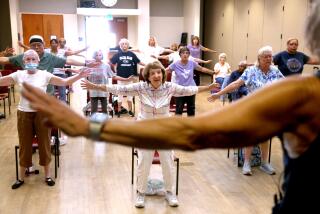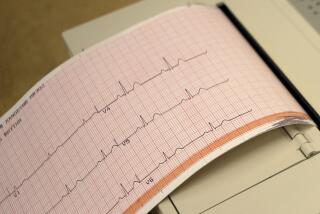Should a Gardener Get the Same Care as a Vice President?
- Share via
The other day I was treating a patient, a gardener, whose three grandchildren rely on him. He needs an implantable cardioverter defibrillator, or an ICD. This is the heart-shocking device made famous by Vice President Dick Cheney, who has one protecting his life. The press has called his ICD “an emergency room in the chest.” The description is apt and a measure of the technological marvel that these pager-sized devices are.
In my 12 years as a practicing cardiac electrophysiologist -- a physician specializing in electrical disorders of the heart -- I’ve witnessed the growth and development of powerful, advanced technologies that can restore life to victims of sudden cardiac death.
It has transformed my practice and my ability to prolong and save life. It’s the kind of scientific progress that every physician hopes to witness in her lifetime, but now I am watching regulatory and market forces converge to blunt the potential benefit.
Is the gardener’s life less important than a vice president’s? Should the wealth of a patient, and the ability to pay for an expensive medical technology, determine who lives or dies?
A special committee appointed by Medicare will convene today in Washington to try to formulate a tough and important recommendation for a national coverage policy for implantable defibrillators.
As a physician, I believe our medical system should value every American’s life as much as that of the vice president. The problem is, ICDs cost about $30,000 each.
Thanks to a landmark clinical study published in the New England Journal of Medicine last year, we now know that an additional 100,000 to 200,000 Americans at risk for sudden cardiac death could live longer after receiving the ICD. There is a 31% reduction in the relative risk of death with an ICD.
It’s the math that is giving regulators pause. If Medicare approves a broad national coverage policy for defibrillators, it will immediately add $3 billion to $6 billion to its budget. That’s the latest price tag, thanks to the ingenuity of our medical technology industry that not only invented these marvelous devices but also invested in the clinical science to prove unequivocally that they save lives.
In addition, there’s an amazing coincidence of public awareness. Every time I see the president on the news, I’m keenly aware that an ICD is watching over his trusted advisor. That’s the kind of protection and sense of comfort that many Americans want when a parent, sibling, child or friend is afflicted by heart disease.
Is it true we cannot afford the ICDs that Americans need? I don’t know, but I can’t help marshaling arguments to justify the expenditure. Although an ICD costs $30,000, they last six or seven years. So the annual cost would seem to be in the range of $4,000 to $5,000 a year.
There is also the question of parity. What about other lifesaving treatments that Medicare pays for?
For kidney dialysis, the cost per life-year saved is $57,000; for cardiac transplant it is $44,000, and for angioplasty for patients with chronic coronary artery disease and mild angina it is a whopping $91,000. ICDs are a downright bargain in comparison.
And for that matter, what about the other needs our government must fulfill? Is it reasonable to spend on defibrillators $6 billion that could be used for homeland security, Head Start programs or assistance for struggling theater companies?
One way to look at it is that as a percentage of total health-care spending, the effect would be modest.
The $2.3 billion that we spend on ICDs is just 2/10s of 1% of the total health-care spending of $1.2 trillion. Let’s triple our expenditure on ICDs to $7 billion by 2005. ICDs would account for only 4/10 of 1% of total health-care spending. That’s because expenditures are expected to increase to $1.9 trillion, fueled primarily by rising drug costs.
When I finished training in my specialty in 1991, very few of the 400,000 victims of sudden cardiac arrest in this country survived. Despite improvements in therapies for heart disease over the last dozen years, sudden cardiac death still claims 250,000 patients a year in the United States -- more than AIDS, lung cancer and breast cancer combined. Though the solutions to those intractable illnesses are a long way off, the protection against sudden cardiac death is, quite literally, in the palm of our hand.
We are an optimistic society in our views toward investing and trusting in technology to improve the quality and quantity of our lives. Unlike other societies, we have rarely yielded to the notion that we should let certain groups of patients at risk simply die a “natural” death.
This refusal to accept “the inevitable” has forced us to use our imaginations and talents to solve complex medical problems and has made our medical institutions the best in the world.
*
Leslie Anne Saxon MD is a professor of medicine and chief of cardiac electrophysiology at USC.






